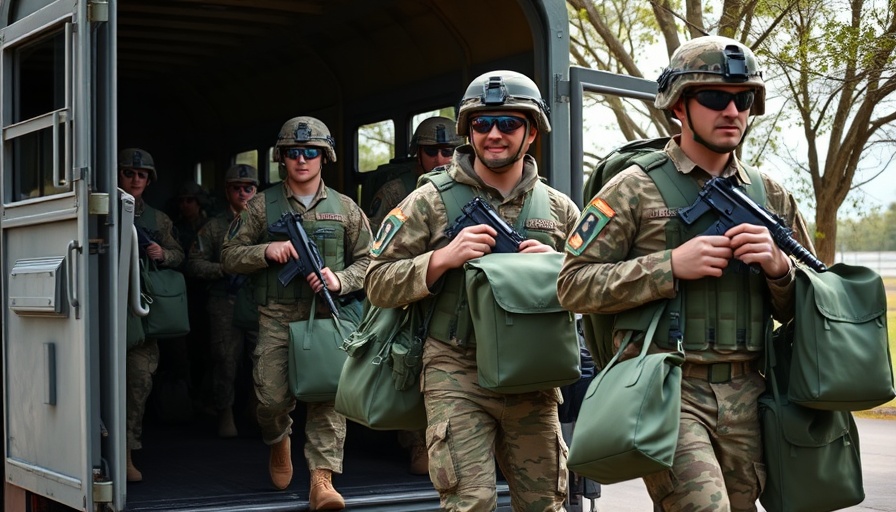
Understanding the Viral Photo and Its Impact on Military Standards
Recently, shocking images of Texas National Guard members arriving in Illinois sparked widespread discussion and criticism regarding military fitness standards. Social media lit up as photos showing seemingly overweight soldiers gained traction online, leading to calls for stricter regulations. Defense Secretary Pete Hegseth responded to the uproar with a bold pronouncement via social media, declaring that 'standards are back at The @DeptofWar.' This reaction has ignited a larger conversation about the expectations placed upon military personnel regarding their physical conditions.
The Rising Importance of Fitness Standards
Historically, physical fitness has been deemed crucial to military readiness. The National Guard Bureau affirmed this by asserting that all personnel are required to meet specific height, weight, and fitness standards. Though these standards are well-established, recent events have brought them under scrutiny. In a statement, the Bureau emphasized the importance of compliance, noting, "On the rare occasions when members are found not in compliance, they will not go on mission." This affirmation underscores the necessity for rigorous training and evaluations.
Criticism and the Role of Social Media
The widespread dissemination of the viral photo serves as a cautionary tale about the power of social media. After being widely viewed, the image resulted in a flurry of mockery and puns online, with comments ranging from light-hearted jokes to more biting criticisms about the troops’ preparedness. This public scrutiny has pressured military leadership to take decisive action.
Future Predictions: Will Standards Tighten?
As tensions rise regarding military fitness, it is likely that we will see an increase in training and remediation efforts within the National Guard and wider military branches. Hegseth has indicated a desire to enforce higher standards for all troops, regardless of gender—a change that could reshape the aesthetic and operational culture of the Armed Forces. If this trend continues, we may witness a renewed focus on physical excellence across all ranks.
Diverse Perspectives: Balancing Fitness and Support
Interestingly, while many support enforcing enhanced fitness standards, some argue that the focus should not solely dwell on physical appearance. Critics suggest that mental well-being and operational readiness are equally important. There's a growing conversation around the need to support service members through various means—fitness being just one of them. As the military grapples with how to balance these facets, the debate will inevitably evolve.
Conclusion: Navigating a Complex Military Culture
The issue at hand extends beyond the photos of the Texas National Guard. It challenges us to reflect on the expectations placed upon our military personnel and the necessary structures supporting them. In an ever-evolving landscape that sees physical and operational standards in the spotlight, the need for open dialogue and understanding about fitness within the military will only grow more critical.
 Add Element
Add Element  Add Row
Add Row 



Write A Comment